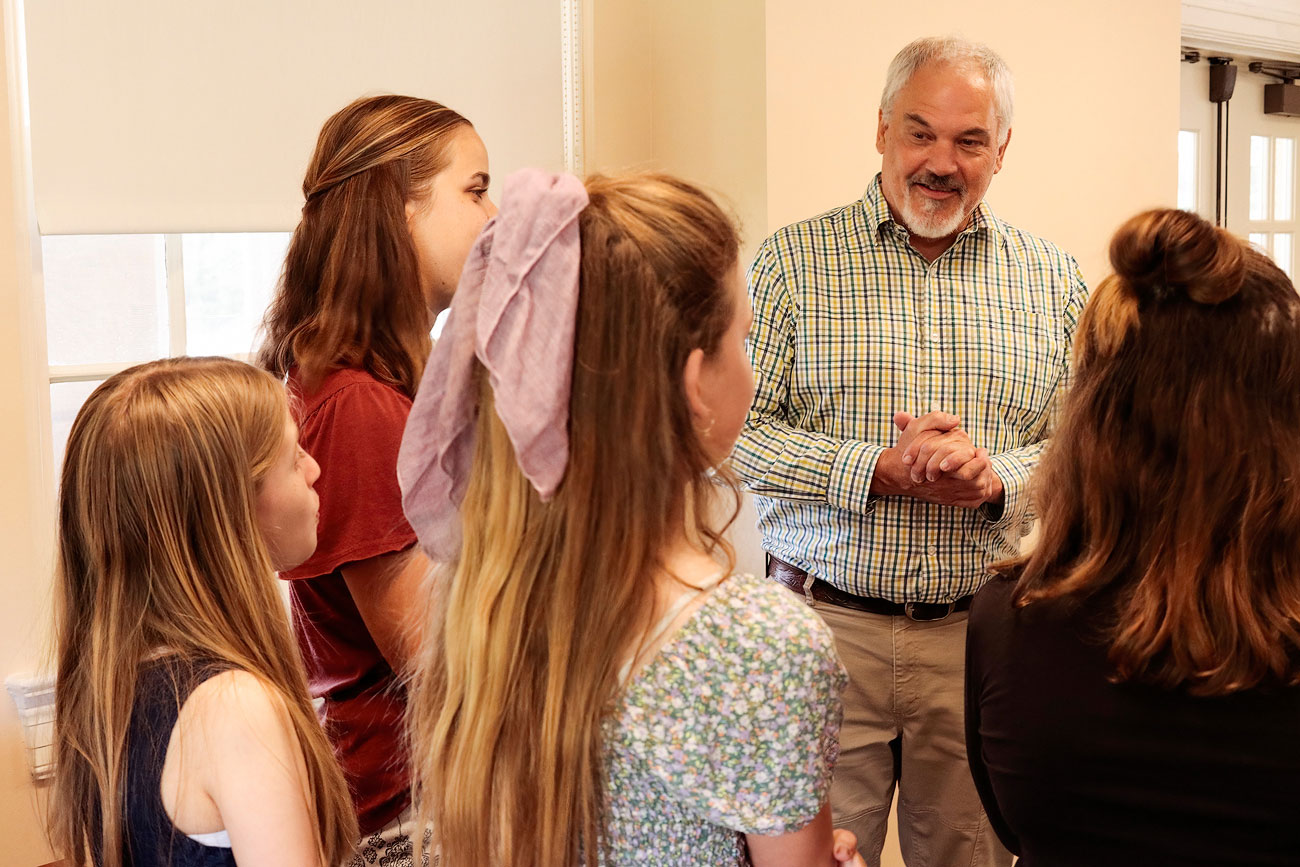
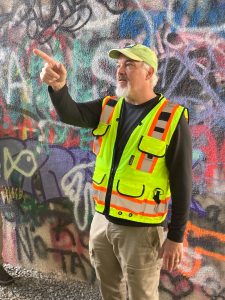
Work hard; play harder. This catchy philosophy of work-life balance can be aptly ascribed to Jeffrey Hunter of Burnsville, an avid long-distance hiker and fan of the Grateful Dead who was recently named Wildlife Conservationist of the Year in the North Carolina Wildlife Federation’s Governor’s Conservation Awards.
A senior program manager with National Parks Conservation Association, Hunter leads efforts to protect public lands like Great Smoky Mountains National Park, the Blue Ridge Parkway, and the Appalachian National Scenic Trail. Since 2017, he has also facilitated a public-private collaboration of two dozen federal, state, Tribal, and non-governmental organizations known today as Safe Passage: The I-40 Pigeon River Gorge Wildlife Crossing Project.
“In July, my organization (NPCA) and Wildlands Network published the results of an intensive three-year study of animal movement patterns along I-40 between Asheville and Knoxville,” Hunter said. “This 86-page report offers up research-driven recommendations for state departments of transportation to make a 28-mile stretch of highway more permeable for wildlife and safer for drivers.”
A native of New York with a BA in environmental studies from SUNY’s Empire State College, Hunter had spent 20 years in the telecommunications industry when a thru-hike of the Appalachian Trail inspired him to realign his career with his conservation values. He left Verizon and headed for Chattanooga in 2003 to lead the American Hiking Society’s Southern Appalachian Initiative. Hunter spent time at the Southern Appalachian Highlands Conservancy, collaborated with the Southern Appalachian Forest Coalition, and directed Wild South’s Tennessee Wild project, ultimately securing wilderness designation for some 20,000 acres of the Cherokee National Forest.
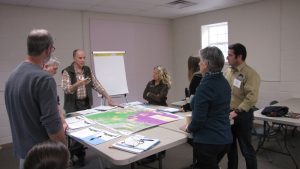
In 2013, he ventured west to direct California’s Bodie Hills Conservation Partnership, restoring sage grouse habitat in a high-desert environment on the edge of the Eastern Sierra. He and his wife, Caara, were actively involved with the Mono County Search and Rescue Team and were putting down roots in their new community when Hunter learned of an intriguing opportunity.
Don Barger, the southeast regional director for NPCA from 1992 to 2019, had a vision of protecting wildlife in the lush, rugged terrain near the Smokies. With high hopes for restoring severed wildlife corridors, Barger lured Hunter back from the west in 2015 to “maximize our last best chances to preserve connectivity within the living landscape of the Southern Appalachian region.”
Hunter—who was backpacking the Superior Hiking Trail somewhere in Minnesota when his new job was announced—soon set about reconnecting with his eastern US network. That included Hugh Irwin, author of Return the Great Forest: A Conservation Vision for the Southern Appalachian Region, the central document of the Southern Appalachian Forest Coalition.
“SAFC’s vision identified core areas and key corridors that made up a conservation network—a network that could be even better if these core areas were protected and corridors were made more robust,” said Irwin. “This involved addressing highway and road issues.”
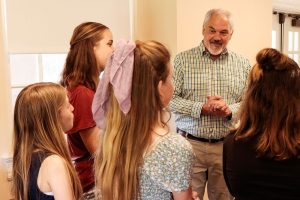
One key corridor in particular had to be protected for the greater vision to be sustainable: the Pigeon River Gorge, a steep and wild area bordering the national park and bisected by the incessant traffic of Interstate 40. However, departments of transportation did not yet acknowledge the impacts of highways on wildlife movement, nor would they embrace engineering designs to address them.
Hunter and Irwin undertook several field trips to scope out the gorge, its proximity to the park, and its connections with other conservation lands—including national forest lands. With assistance from Caara Hunter and Tracy Davids of Defenders of Wildlife, they began to set out some wildlife cameras in a few key areas, an effort that would evolve into a systematic survey of the gorge supported by trained researchers.
In 2017, Hunter started to organize interested groups into an informal network that communicated regularly on wildlife mortality issues in the gorge and other important hotspots in the region. Key to this new collaborative network was the inclusion of representatives from departments of transportation in both North Carolina and Tennessee.
“Jeff mapped out a path to elevate recognition of the area as a wildlife corridor so that work would be done to address improvements for wildlife passage. He saw that this had to be based on solid scientific information,” Irwin said. “It was Jeff’s dedication, vision, and creation of a network of people and resources that made this study possible.”
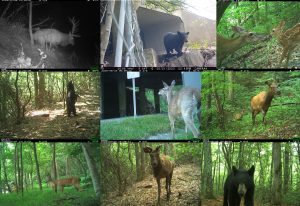
Bringing the DOTs into a collaborative environment as partners eventually resulted in a new openness to design changes that could improve wildlife connectivity in the gorge. On a previously planned bridge replacement at NC Exit 7 at Harmon Den, NCDOT is currently incorporating two wildlife pathways above Cold Springs Creek and adding wildlife jumpouts, cattleguards, and fencing to guide animals to safely cross under the bridge.
“It was important to bring consultants, NCDOT, and land managers from multiple agencies together to provide recommendations on the Harmon Den bridge replacement,” said Tara Anderson, a wildlife biologist in Pisgah National Forest. “The result will benefit large and small mammals, amphibians, and reptiles as well as aquatic species.”
To make it possible for citizens to contribute their funds to future wildlife crossing work, seven of the Safe Passage partner organizations formed the Safe Passage Fund Coalition. SmokiesSafePassage.org has raised $120,000 to date—and Hunter has played recordings of historic Dead shows in Asheville and Burnsville venues while educating pub-goers about local road ecology needs.
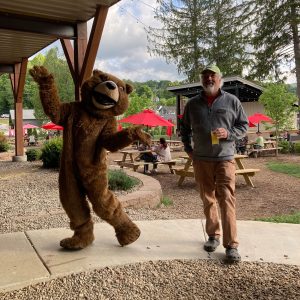
“Jeff’s humanity, talent, and commitment brought diverse interests together in common purpose when nothing less would have succeeded,” said Barger, now retired from NPCA. “The project serves as a lesson and a template for all of those interested in preserving the integrity and connectivity of our living landscape.”
Emily Jones, NPCA’s current southeast regional director, said anyone who knows Hunter is not surprised to see him win this prestigious award. “Whether he is setting up camera traps and leading hikes in the heart of the Carolina wilderness or engaging members of Congress on complex issues, he always puts our people, parks, and planet above all else.”
As Safe Passage continues to elevate awareness around landscape connectivity in the Southern Appalachians, land acquisitions are stabilizing key habitat adjacent to the highway, and wildlife modifications are in the works for upcoming bridge replacements.
“I am extremely humbled and thrilled to receive this recognition from my peers,” Hunter said. “But, for me, the big story is that NCDOT is beginning to address wildlife–vehicle conflict in their projects statewide, so Safe Passage is beginning to change hearts and minds. That’s not my win; that’s the collaborative’s win.”
Hunter will be honored at an awards banquet September 10 in Cary, North Carolina, alongside 18 other award recipients committed to conserving the state’s wildlife, habitat, and natural resources. Learn more at ncwf.org.
Subscribe to get the latest posts sent to your email.
The Great Smokies Welcome Center is located on U.S. 321 in Townsend, TN, 2 miles from the west entrance to Great Smoky Mountains National Park. Visitors can get information about things to see and do in and around the national park and shop from a wide selection of books, gifts, and other Smokies merchandise. Daily, weekly, and annual parking tags for the national park are also available.